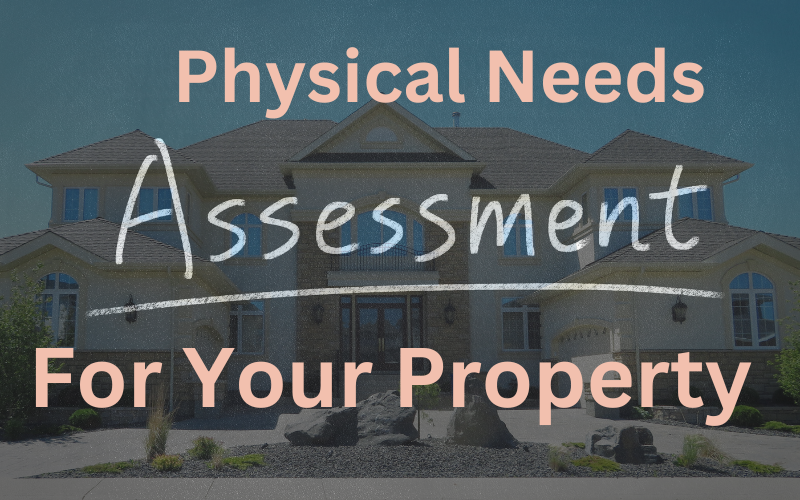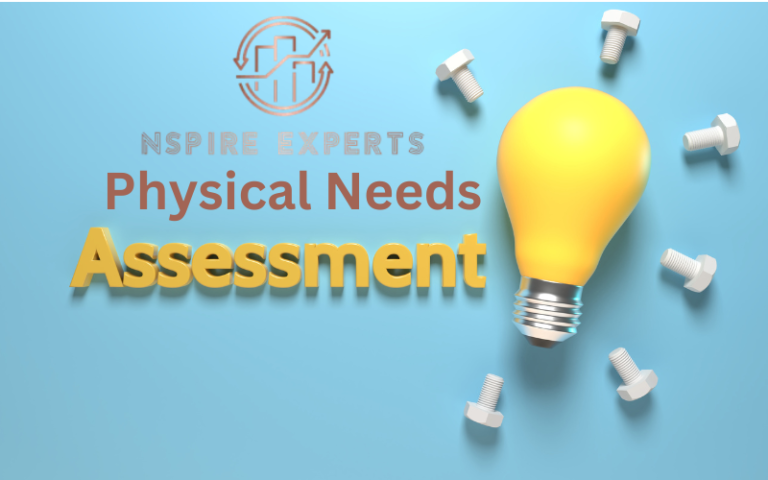Conducting a comprehensive Physical Needs Assessment (PNA) is crucial to understanding a property’s long-term maintenance and repair needs. This process helps property managers, investors, and owners make informed decisions about repairs, upgrades, and budgeting. Learn how NSPIRE Experts can assist with your property management needs.
What Is A Physical Needs Assessment
A Physical Needs Assessment is a detailed evaluation of a property’s physical condition. This assessment includes an inspection of structural, mechanical, electrical, and plumbing systems. You can also check out the NSPIRE Experts blog for more insights on property management practices. A Property Physical Needs Assessment is a comprehensive evaluation that covers various aspects of a property’s condition. Here’s what a typical PNA includes:
- Structural Integrity: Examination of the foundation, walls, roofing, and overall structural stability.
- Mechanical Systems: Assessment of HVAC systems, elevators, and other mechanical components.
- Electrical Systems: Evaluation of wiring, electrical panels, lighting, and compliance with electrical codes.
- Plumbing Systems: Inspect pipes, fixtures, drainage, and water supply systems.
- Safety and Code Compliance: Ensuring the property adheres to local, state, and federal safety regulations.
- Environmental Considerations: Checking for environmental hazards such as asbestos, lead paint, or mold.
For more on property assessments and inspections, you might consider external resources like the U.S. Department of Housing and Urban Development (HUD), which provides detailed guidelines for conducting effective assessments. NAHRO: An external link to the National Association of Housing and Redevelopment Officials https://www.nahro.org/ enhances authority by referencing an industry leader.
The Process of Conducting a Property Physical Needs Assessment
Conducting a PNA involves several key steps to ensure a thorough evaluation:
- Initial Consultation and Planning: This stage involves understanding the client’s requirements, defining the scope of the assessment, and planning the on-site inspection.
- On-site Inspection and Data Collection: Experts visit the property to collect data, take measurements, and note any visible issues.
- Analysis and Evaluation of Collected Data: The collected data is analyzed to identify current and potential future issues.
- Reporting and Documentation: A detailed report is prepared, highlighting the findings, recommendations, and repair cost estimates.
- Follow-up and Implementation: NSPIRE Experts can assist with implementing the recommended repairs and maintenance plans.
Importance of Property Physical Needs Assessment

Additionally, if you’re dealing with tenant turnovers, we recommend checking out our detailed guide on Property Turnover Checklists to ensure smooth transitions between tenancies. The benefits of a Property Physical Needs Assessment are numerous. Here’s why every property owner should consider conducting a PNA:
1. Ensuring Safety and Compliance
- Identifying Hazards and Potential Risks: A PNA helps in detecting issues that could pose safety risks to occupants, such as structural weaknesses, faulty electrical systems, or hazardous materials.
- Meeting Regulations: It ensures that the property complies with local, state, and federal regulations, avoiding legal liabilities and penalties.
2. Planning and Budgeting for Maintenance and Repairs
- Anticipating Future Maintenance Needs: By identifying issues early, property owners can plan for future maintenance, avoiding unexpected repairs and expenses.
- Budget Allocation and Financial Planning: Detailed cost estimates provided in the PNA report help in allocating budgets effectively, ensuring financial resources are used efficiently.
3. Enhancing Property Value and Longevity
- Proactive Maintenance Strategies: Regular assessments and proactive maintenance can extend the life of a property, preserving its value over time.
- Improving Property Value and Marketability: A well-maintained property is more attractive to buyers and tenants, potentially increasing its market value.
4. Facilitating Informed Decision Making
- Assisting Property Owners and Managers: A PNA provides essential information that helps in making informed decisions about property management, maintenance, and improvements.
- Supporting Investment and Financing Decisions: Investors and financiers can use PNA reports to assess the viability of investments and secure financing based on the property’s condition.
Case Studies/Examples
Example 1: Residential Property Assessment A homeowner requested a PNA before selling their property. NSPIRE Experts identified several issues, including roof damage and outdated electrical systems. With the PNA report, the homeowner was able to address these issues, leading to a higher sale price and a smoother transaction process.
Example 2: Commercial Property Assessment A commercial property owner wanted to assess the condition of their office building. The PNA revealed significant HVAC system inefficiencies and safety code violations. By addressing these issues, the owner improved the building’s energy efficiency and compliance, attracting higher-quality tenants.
Example 3: Industrial Property Assessment An industrial facility underwent a PNA to identify potential risks. NSPIRE Experts found structural weaknesses and outdated fire safety systems. The resulting repairs and upgrades not only enhanced safety but also reduced insurance premiums and improved operational efficiency.
Common Challenges and Solutions in Physical Needs Assessment

Challenges in Conducting Assessments:
- Access Issues: Difficulty accessing certain areas of the property for inspection.
- Incomplete Documentation: Lack of historical maintenance records.
- Unforeseen Complications: Hidden issues that are not immediately visible.
Solutions and Best Practices:
- Effective Planning and Communication: Ensuring clear communication with property owners and detailed planning to address access issues.
- Utilizing Technology and Tools: Leveraging advanced inspection tools and techniques to uncover hidden problems.
- Hiring Experienced Professionals: Engaging experts like NSPIRE Experts who have the knowledge and experience to conduct thorough assessments.
Choosing the Right Professional for Physical Needs Assessment
When selecting a professional for your Property Physical Needs Assessment, consider the following:
- Qualifications and Certifications: Ensure the assessor has relevant certifications and qualifications.
- Experience and Expertise: Look for professionals with a proven track record in conducting PNAs.
- Client Testimonials and References: Check reviews and ask for references to gauge the quality of their work.
NSPIRE Experts pride themselves on their expertise and comprehensive approach to Property Physical Needs Assessments. Our team is well-equipped to handle assessments for residential, commercial, and industrial properties, ensuring you receive accurate and actionable insights.
Key Components and Benefits of Property Physical Needs Assessment
| Component | Description | Benefits |
|---|---|---|
| Structural Integrity | Examination of foundation, walls, roofing, and stability | Ensures building safety and longevity |
| Mechanical Systems | Assessment of HVAC, elevators, and other mechanical components | Improves efficiency and comfort |
| Electrical Systems | Evaluation of wiring, panels, lighting, and code compliance | Prevents electrical hazards and outages |
| Plumbing Systems | Inspection of pipes, fixtures, drainage, and water supply | Avoids leaks and water damage |
| Safety and Code Compliance | Ensuring adherence to local, state, and federal regulations | Avoids legal issues and penalties |
| Environmental Considerations | Checking for hazards like asbestos, lead paint, or mold | Protects health and meets environmental standards |
Frequently Asked Questions (FAQs)
What is the cost of a Property Physical Needs Assessment?
- Costs can vary based on property size, complexity, and location. Contact NSPIRE Experts for a customized quote.
How often should a PNA be conducted?
- Typically, every 3-5 years, or as needed based on property conditions.
Can a PNA help in property resale or refinancing?
- Yes, a PNA provides valuable information that can enhance the resale value and assist in securing financing.
What are the benefits of a PNA for property investors?
- Investors gain insights into potential liabilities and necessary improvements, aiding in making sound investment decisions.
Conclusion
In summary, a Property Physical Needs Assessment is an invaluable tool for property owners, managers, and investors. It helps ensure safety, compliance, and proper maintenance, ultimately enhancing the value and longevity of your property. By conducting regular PNAs, you can make informed decisions and avoid costly surprises. NSPIRE Experts are here to provide you with expert assessments, guiding you every step of the way.
For a full range of services, including assessments, compliance, and property management support, visit the NSPIRE Experts website. By incorporating a Property Physical Needs Assessment into your property management strategy, you can ensure your property remains safe, compliant, and valuable. Contact us today to learn more and schedule your assessment.

